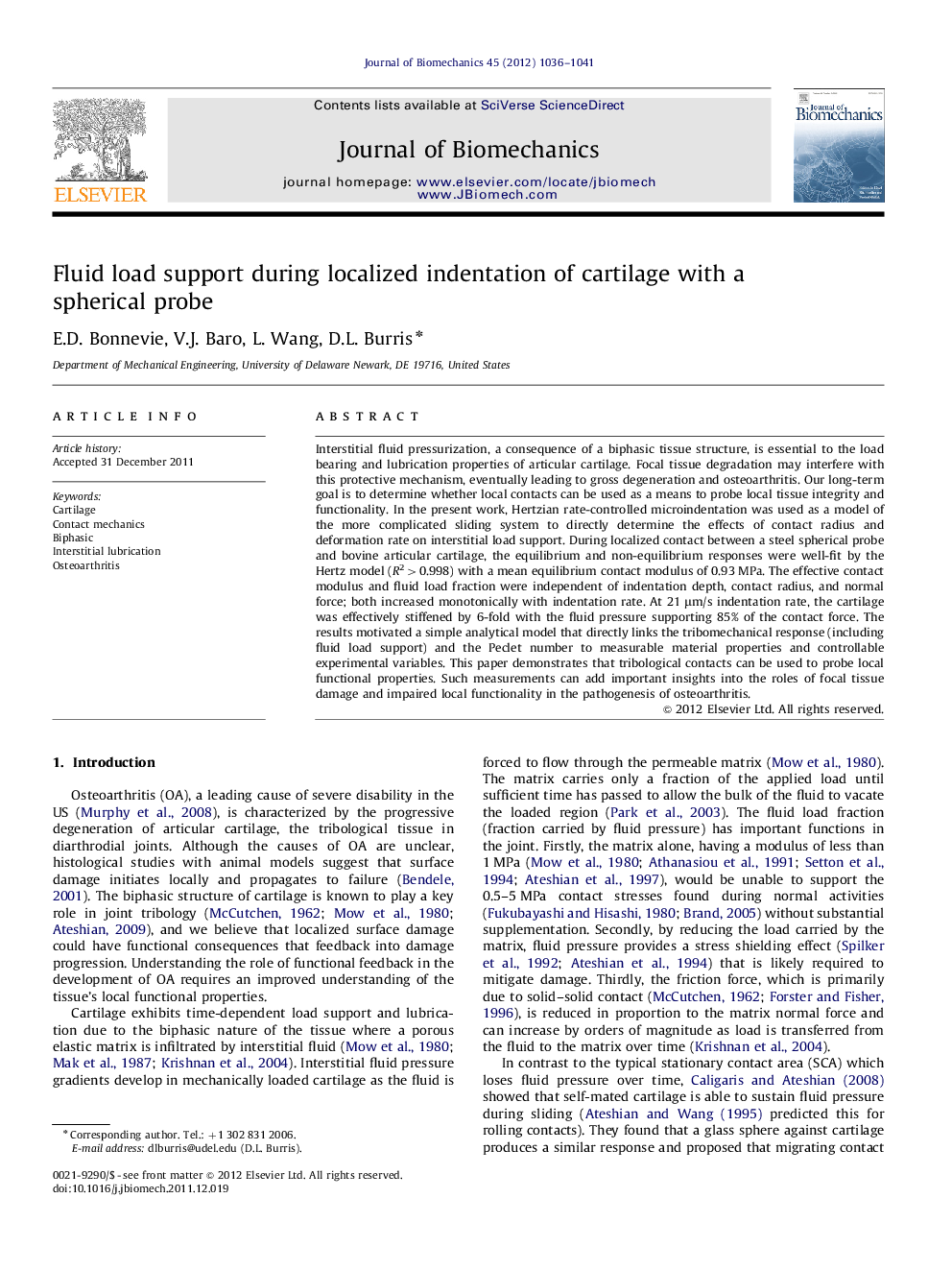| Article ID | Journal | Published Year | Pages | File Type |
|---|---|---|---|---|
| 10433170 | Journal of Biomechanics | 2012 | 6 Pages |
Abstract
Interstitial fluid pressurization, a consequence of a biphasic tissue structure, is essential to the load bearing and lubrication properties of articular cartilage. Focal tissue degradation may interfere with this protective mechanism, eventually leading to gross degeneration and osteoarthritis. Our long-term goal is to determine whether local contacts can be used as a means to probe local tissue integrity and functionality. In the present work, Hertzian rate-controlled microindentation was used as a model of the more complicated sliding system to directly determine the effects of contact radius and deformation rate on interstitial load support. During localized contact between a steel spherical probe and bovine articular cartilage, the equilibrium and non-equilibrium responses were well-fit by the Hertz model (R2>0.998) with a mean equilibrium contact modulus of 0.93 MPa. The effective contact modulus and fluid load fraction were independent of indentation depth, contact radius, and normal force; both increased monotonically with indentation rate. At 21 μm/s indentation rate, the cartilage was effectively stiffened by 6-fold with the fluid pressure supporting 85% of the contact force. The results motivated a simple analytical model that directly links the tribomechanical response (including fluid load support) and the Peclet number to measurable material properties and controllable experimental variables. This paper demonstrates that tribological contacts can be used to probe local functional properties. Such measurements can add important insights into the roles of focal tissue damage and impaired local functionality in the pathogenesis of osteoarthritis.
Related Topics
Physical Sciences and Engineering
Engineering
Biomedical Engineering
Authors
E.D. Bonnevie, V.J. Baro, L. Wang, D.L. Burris,
